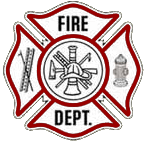If paramedics err, what happens to them? - Los Angeles Times
If paramedics err, what happens to them? - Los Angeles Times:
If paramedics err, what happens to them?

In California, there's no guarantee that they or emergency medical technicians will be reported, investigated or disciplined.

 A Mustang broadsided Kathy Schroeder's Hyundai sports coupe in a Palmdale intersection, knocking her unconscious. She woke up wedged against the console, covered with an oily film.
A Mustang broadsided Kathy Schroeder's Hyundai sports coupe in a Palmdale intersection, knocking her unconscious. She woke up wedged against the console, covered with an oily film."I just remember my eyes and face burning," she said, "like bacon sizzling."
She recalled telling the Los Angeles County Fire Department rescuers at the scene but said they didn't flush her eyes. After being rolled into a private ambulance, she told the attendants too. They didn't flush her eyes, either, explaining that it would get their floor wet, she said.
By the time the hospital did the flushing, the damage was done. Battery acid and other chemicals had burned her corneas, according to her subsequent lawsuit against her rescuers. Even now, after five eye surgeries in five years, life on a good day is a blurry video. Unable to resume her job as an advocate for the disabled, Schroeder, now 47, received a $400,000 settlement from the ambulance company.
The people who regulate medical rescuers in Los Angeles County, however, heard nothing about this incident.
County policy requires fire and ambulance officials to report potentially serious medical lapses by paramedics and emergency medical technicians to regulators. But those officials saw no problem with Schroeder's care. Even after the 2004 settlement, neither rescue provider came forward.
It was not the only such case to escape regulatory scrutiny in recent years. A Times investigation found that oversight of paramedics and EMTs in California is haphazard at best, with nothing to ensure that potentially problematic cases are reported and investigated, or that errant rescuers are held to account.
Countless lives have been spared and injuries relieved by the state's medical rescuers, often the frontline caregivers in a crisis. To many people, they are heroes. Their competence, often, is assumed.
But when things go wrong, The Times found, California is not set up to consistently weed out poor performers or dangerous patterns — raising the risk of harm to unsuspecting patients.
With little clout, regulators essentially rely on rescue providers to report on themselves, making it nearly impossible to get a realistic picture of where the system is breaking down or how it is performing overall.
The bureaucracy is fragmented. In contrast to other populous states — such as Texas, Massachusetts and New York — California has no overarching agency to oversee the state's 15,000 paramedics and 70,000 EMTs.
Paramedics are licensed by and ultimately accountable to the state Emergency Medical Services Authority, which has limited enforcement powers. EMTs, who receive less training and whose duties are more limited, answer to any one of dozens of regional authorities.
"There's a lack of accountability," said Dr. David Persse, a former Los Angeles County regulator who left to become the Houston Fire Department's medical director, partly because the centralized oversight system in Texas was stronger. He cited that state's ability — lacking in California — to levy steep fines to bring rescue providers into line. "You got to have some teeth," he said.
The Times reviewed all regulatory actions taken against paramedics and EMTs in California from 2000 to 2006. It examined incident logs, patient complaints and assorted legal claims; it interviewed regulators, rescuers and patients. Among the findings:
There is no coherent system for reporting problems or processing complaints that could lead to discipline.
Los Angeles County regulators, for instance, specifically require fire and ambulance officials to report suspected cases of gross negligence or substance abuse by paramedics and EMTs, but Sacramento and Orange counties have no similar policy.
Even when a policy exists, as in L.A. County, "the interpretation of what fits in there may be different from person to person," said Carol Meyer, director of the county's Emergency Medical Services Agency from 2003 until last week.
Without legal authority to penalize anyone for failing to report problems, state officials admit they are stymied. New state laws are needed "to address some of the shortfalls in reporting requirements, so we can get a better picture of what's happening out there in the field," said Dr. Cesar A. Aristeiguieta, director of the California Emergency Medical Services Authority.
For the public, there is no single, obvious place to go to register a complaint. Even when someone files a legal action, as in Schroeder's case, regulators are not necessarily alerted to malpractice awards or settlements.
The numbers and types of disciplinary actions across regions are strikingly inconsistent.








No comments:
Post a Comment